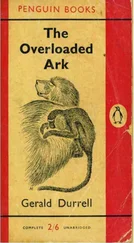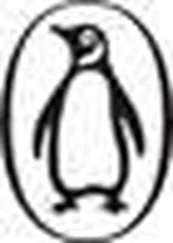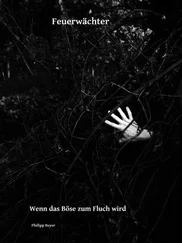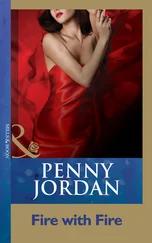
To Ria Palov for keeping the faith.
And Steve Kasdin for taking a chance.
The author would like to express thanks to Jeanne Chitty for the exquisitely rendered artwork.

CHAPTER 1
WASHINGTON, D.C.
DECEMBER 1
His movements slow and deliberate, the curator ran his fingertips over the small bronze coffer, lightly grazing the incised Hebrew letters. A lover’s caress.
Holding his breath, he opened the box.
“Claves regni caelorum,” he whispered, entranced by the relic nestled within the box. Like Eve gazing upon the forbidden fruit, he stared at the twelve polished gemstones anchored in an ancient gold setting.
The keys to the kingdom of heaven.
Dr. Jonathan Padgham, chief curator at the Hopkins Museum of Near Eastern Art, reached into the coffer, carefully removing what had once been a gem-encrusted breastplate. Once. Long ago. More than three thousand years ago, by his reckoning.
Although bits and pieces of the gold scapular still precariously clung to the setting, the relic was scarcely recognizable as a breastplate, the chains that originally secured the gem-studded shield to the wearer’s body having long since vanished. Only the stones, set in four rows of three, gave any indication as to the relic’s original rectangular shape, the breastplate measuring some five inches by four.
“That’s some real bling-bling, huh?”
Annoyed by the disruption, Padgham glanced at the curly-haired woman engaged in placing a digital camera on a tripod. Not for the first time, he wondered what possessed her to pair black leather motorcycle boots with a long tartan skirt.
A cheeky grin on her face, Edie Miller stepped over to his desk, bending her head to peer at the relic. Since immigrating to “the land of the free,” he’d come to realize that American females were far more brazen than their English cousins. Ignoring her, Padgham arranged the breastplate on a square piece of black velvet, readying it to be photographed.
“Wow. There’s a diamond, an amethyst, and a sapphire.” As she spoke, the Miller woman pointed to each stone she named. Padgham was tempted to snatch her hand, afraid she might actually touch the precious relic. A freelance photographer hired by the Hopkins to digitally archive the collection, she was not trained to handle rare artifacts.
“And there’s an emerald! Which, by the by, happens to be my birthstone,” she continued. “What do you think that is, about five carats?”
“I have no idea,” he said dismissively; gemology was not his strong suit. Hers either, he suspected.
“How old a relic do you think it is?”
Barely glancing at the plaid-garbed magpie, he again replied, “I have no idea.”
“I’m guessing really old.”
To be certain, the age of the breastplate was punctuated by a very large question mark. So, too, its provenance. Although he had an inkling.
Again, Padgham ran the tip of a manicured finger over the engraved symbols that adorned the bronze coffer in which the breastplate had been housed. He recognized only one word—

—the Hebrew tetragrammaton. The unspeakable four-letter name of God. It had been placed on the coffer as a talisman to ward off the curious, the covetous, the carnivores who gobbled up ancient relics like candy-coated Sweeties.
How in God’s name did an ancient Hebrew relic end up in Iraq, of all places?
Although the museum director, Eliot Hopkins, had been very hush-hush, he did let slip that the relic originated in Iraq. Padgham, an expert in Babylonian art, had been entrusted by the old man with the initial evaluation of the bejeweled breastplate. He’d also been cautioned to keep mum. Padgham was no fool. Far from it. He knew the relic had been bought on the black market.
Risky business, the purchase of stolen relics. In recent years a curator at the renowned Getty had been brought to trial by Italian prosecutors for having knowingly purchased stolen artifacts. The black-market antiquities trade was a billion-dollar business, particularly with the unabated pilfering of Iraqi relics and Babylonian art popping up all over the place these days. Many in the museum world turned a blind eye, jaded enough to believe that they were preserving, not stealing, ancient culture. Padgham concurred. After all, had it not been for European art thieves, the world would have been deprived of such treasures as the Rosetta stone and the Elgin Marbles.
“There’s too much backlight falling on the relic. Do you mind if I adjust the window shades?”
Padgham drew his gaze away from the relic. “Hmm . . . no, no, of course not. This is your arena, as it were.” He pasted a smile on his face, needing the woman’s cooperation. He’d been ordered not to show the relic to anyone on the museum staff. It was the reason why he was conducting his preliminary evaluation on a Monday, when the museum was closed to the public and no staff were on the premises. Of course, the photographer didn’t count; the woman was a freelance contractor who didn’t know a breastplate from a bas-relief. Who would she tell? As far as he knew, aside from the two guards in the museum lobby, they were the only two bodies afoot.
A flash of light momentarily illuminated the dimmed office.
“Looks good,” the photographer remarked, reviewing the image on the camera display. She deftly popped a blue plastic card out of the camera. “I’ll just snap a backup copy. No sense having four gigabytes of internal memory if I don’t use it.” No sooner did a second flash go off than she gestured to the bronze coffer. “Do you want a shot of the metal box as well?”
“Is Queen Anne dead?” Then, catching himself, he added in a more congenial tone, “If you would be so kind.”
Padgham stood aside as the photographer repositioned the tripod. Contemplating the beautiful relic, he worriedly bit his lower lip. As curator of Babylonian antiquities, he’d been given custody of the breastplate because it’d been found in the deserts of Iraq. The museum director assumed he’d be able to put flesh to bone, to derive the four Ws of provenance: who, where, when, and why. To Padgham’s consternation, those answers eluded him. The breastplate was most definitely of Hebrew derivation, and his knowledge of the ancient Israelites was sketchy at best. Thus, the reason for the digital photograph.
As fate would have it, an old Oxford chum, Caedmon Aisquith, was currently in Washington on a publicity junket for his newly released book, Isis Revealed —one of those faux histories that purported to expose the arcane secrets of the long-buried past. That sort of esoteric conspiracy theory was all the rage. Never one to gawk at the proverbial gift horse, upon reading the newspaper review he immediately rang up Aisquith, renewing their acquaintanceship. Surprising, really. Last he’d heard, old Aisquith had absconded to the continent, taken his inheritance, and opened an antiquarian bookshop on the Left Bank. Drinking Beaujolais and banging French tarts; the man should have his head examined.
Although they hadn’t set eyes on one another in nearly twenty years, Aisquith had agreed to meet him later that evening for drinks. Hoping to pique his interest—and in the process glean some kernel of information about the mysterious Hebrew relic—he intended to e-mail Aisquith the digital photographs. A true Renaissance man with an encyclopedic knowledge of ancient history, Caedmon Aisquith would, hopefully, be able to shed some much-needed light.
Читать дальше













